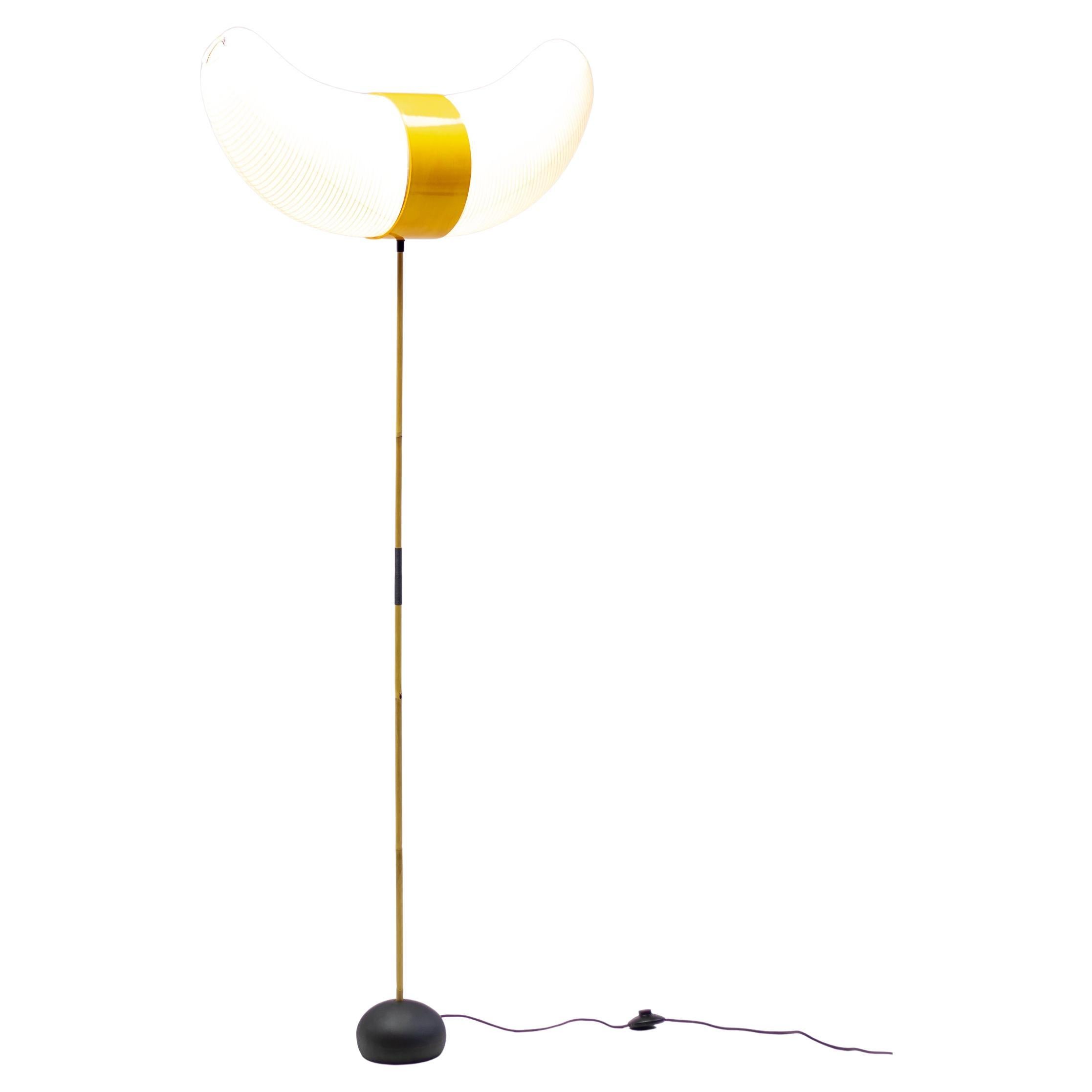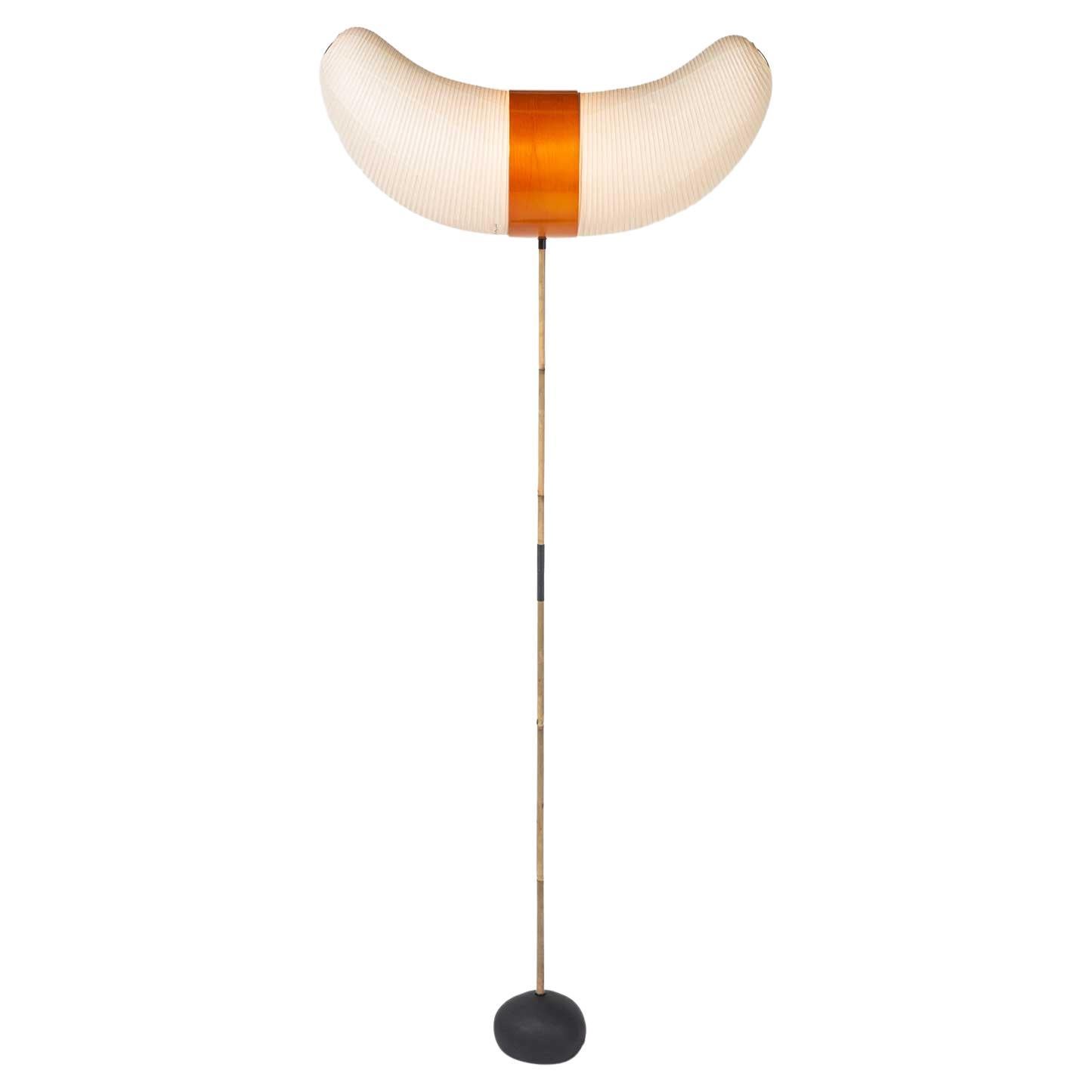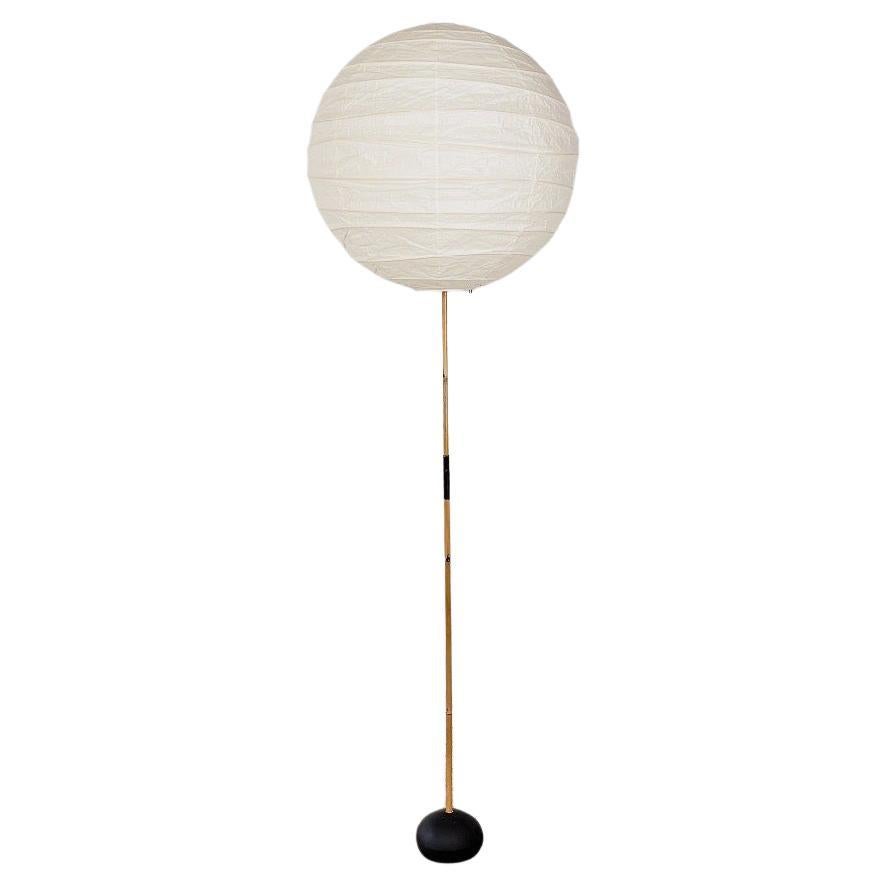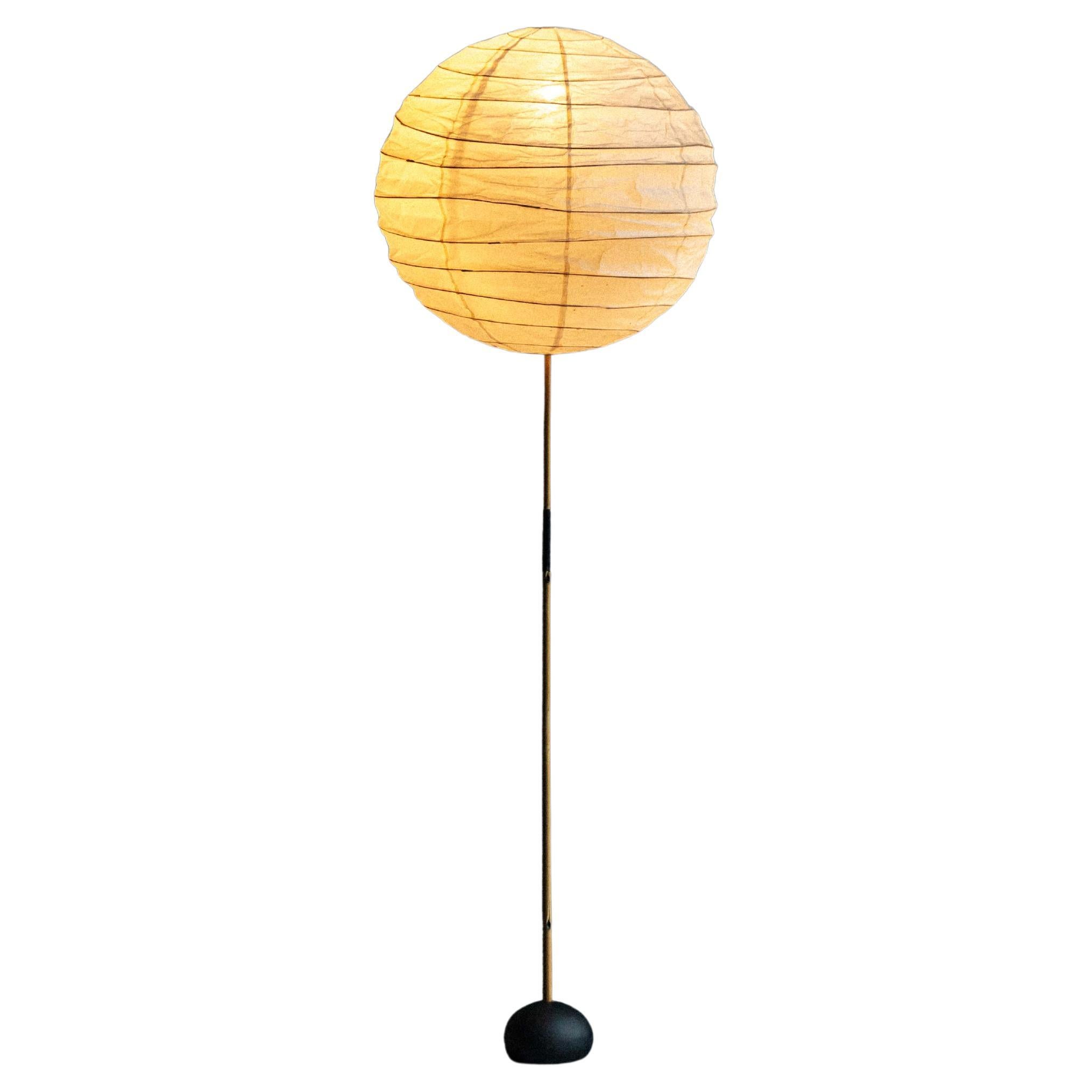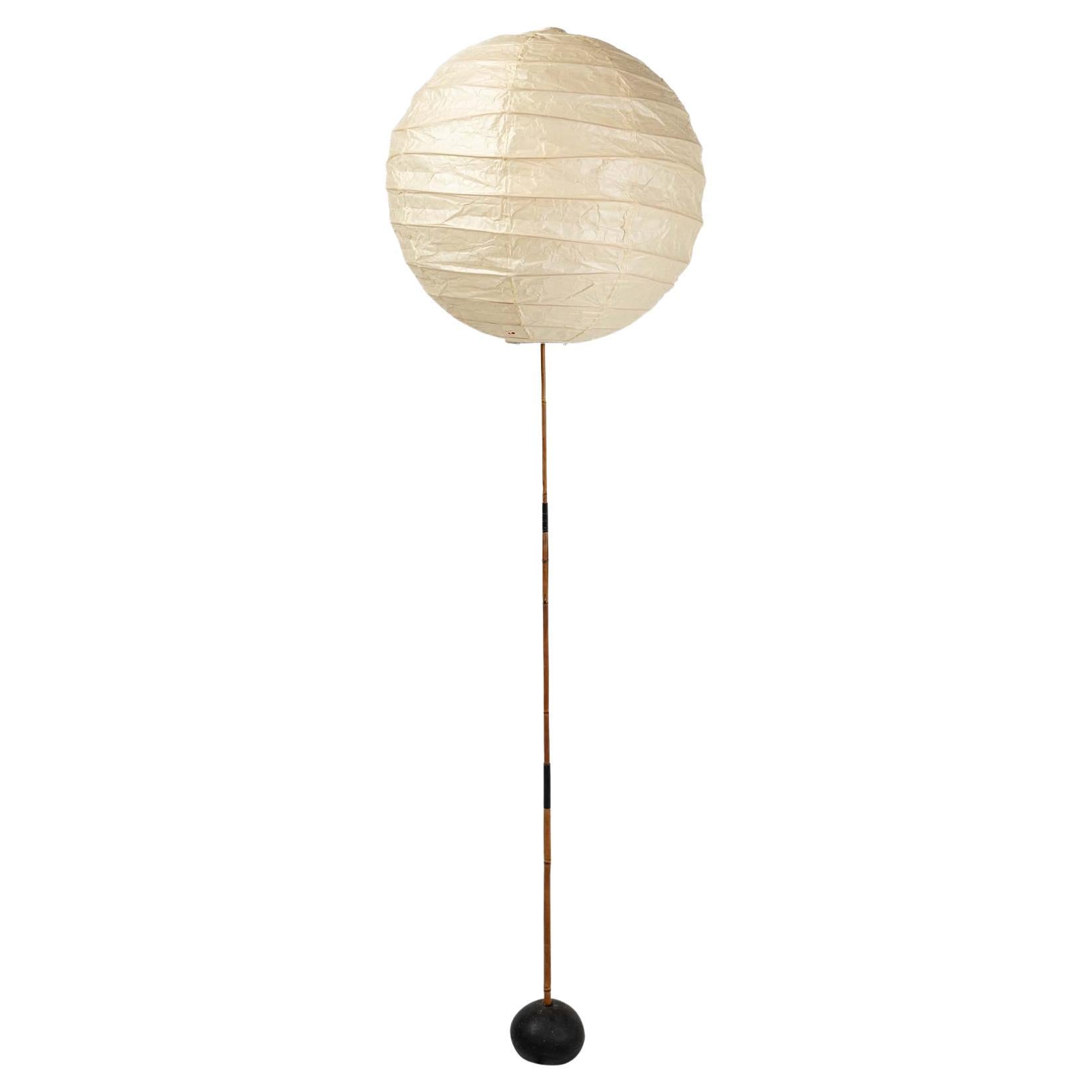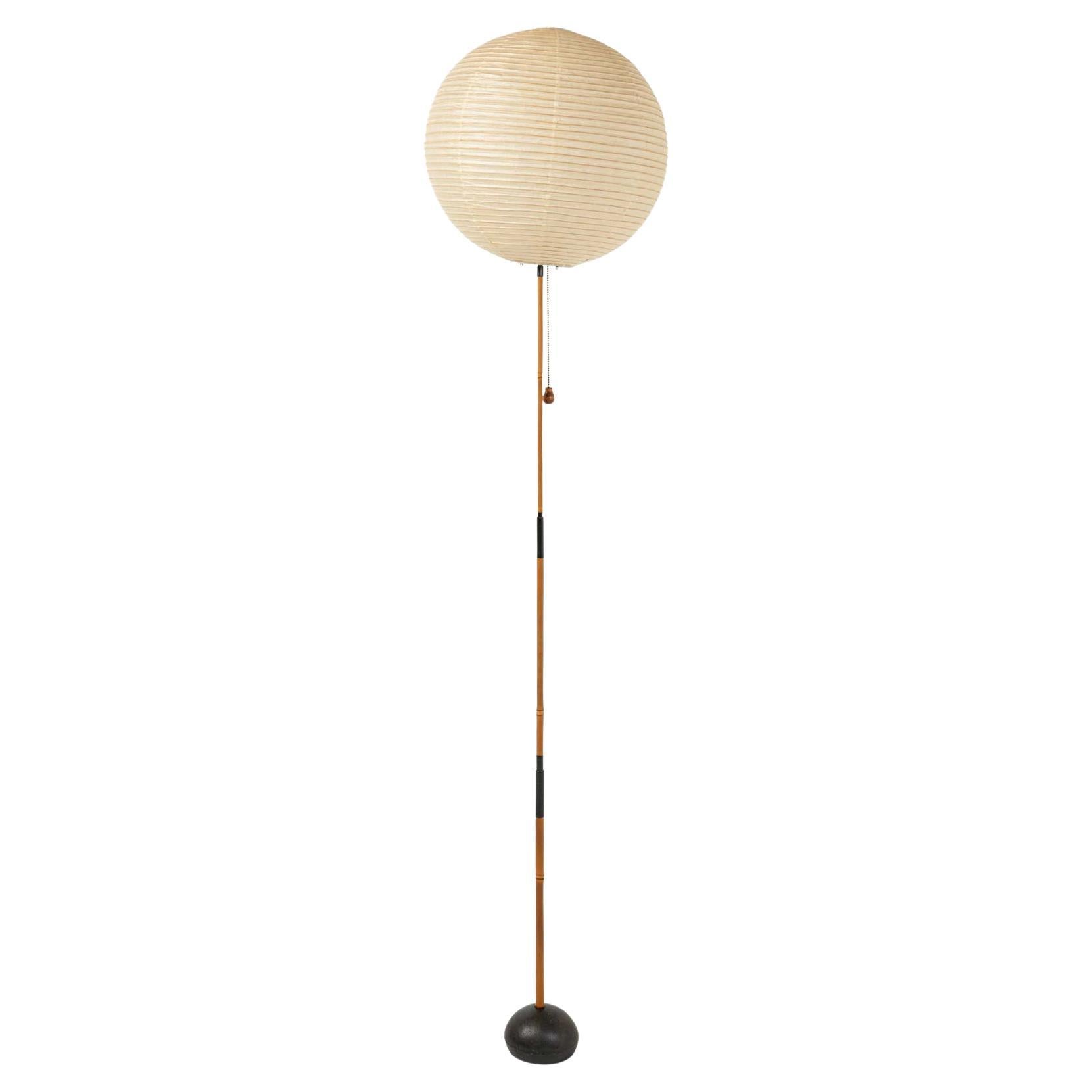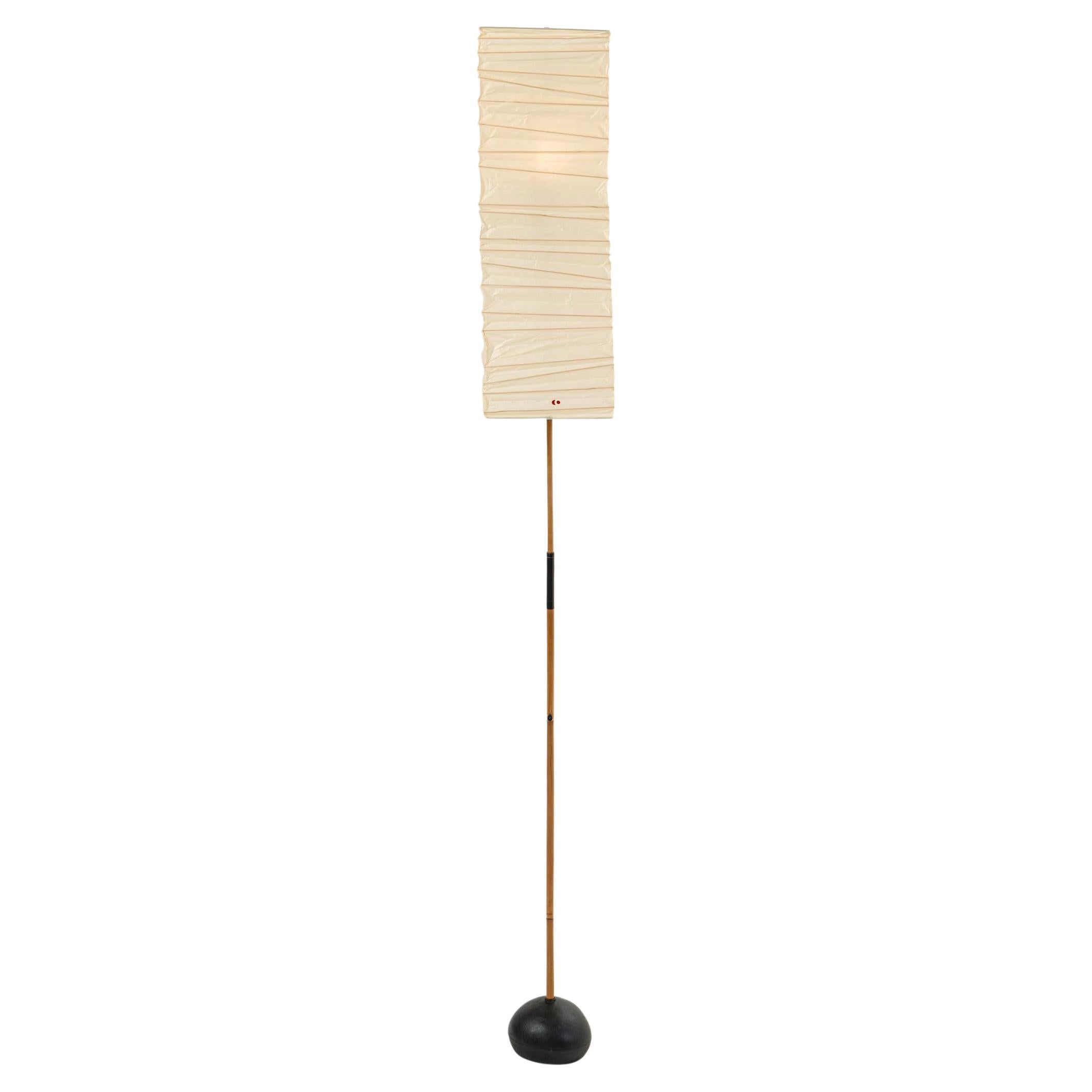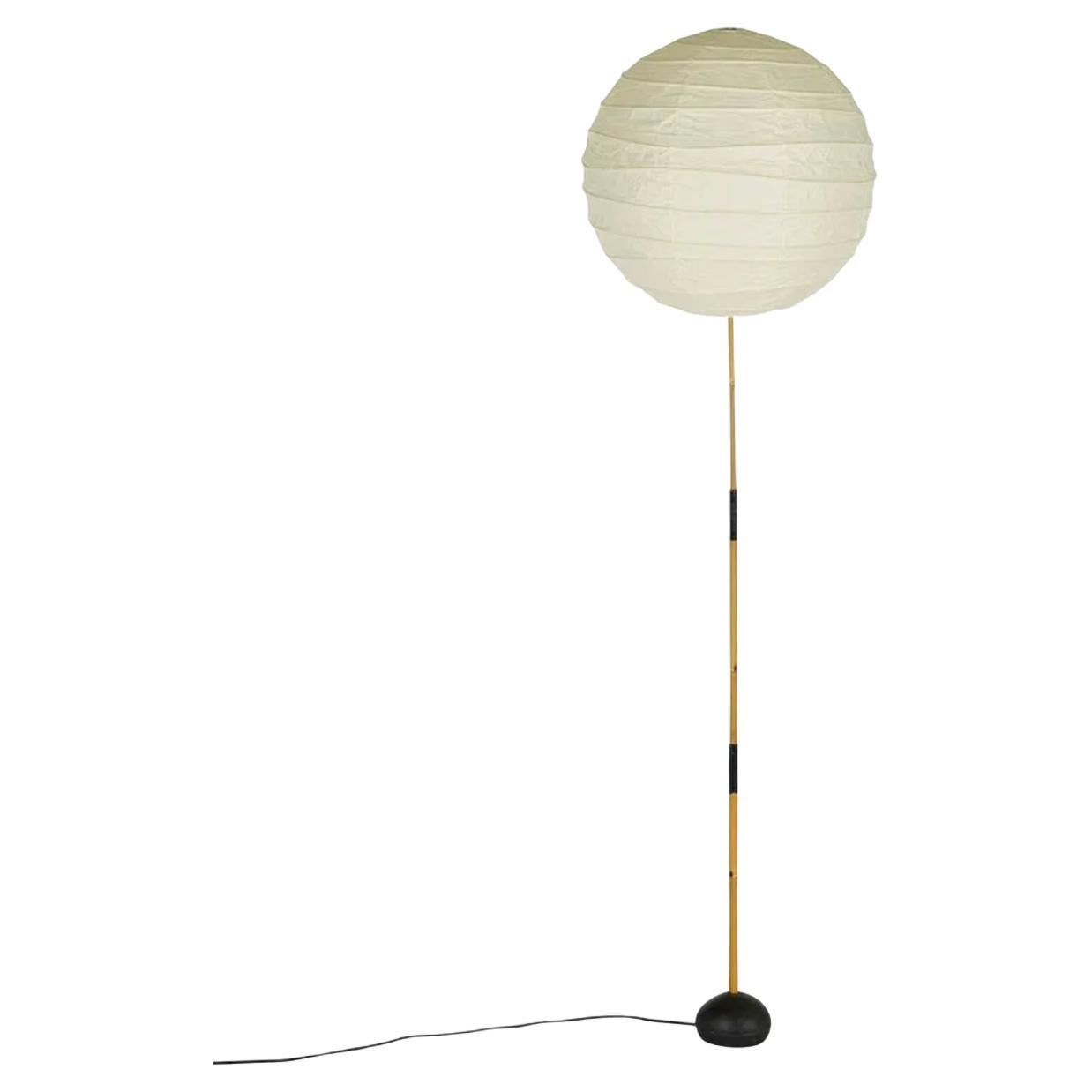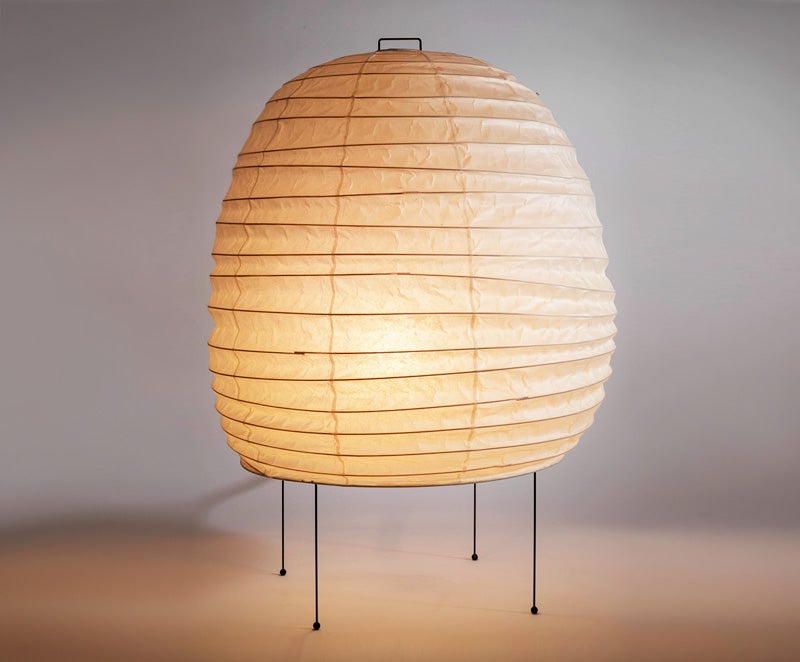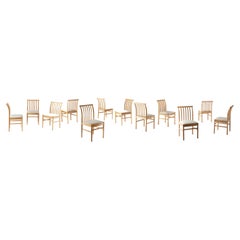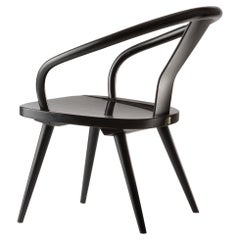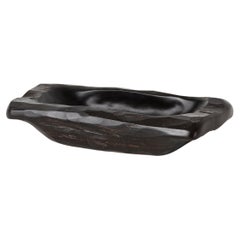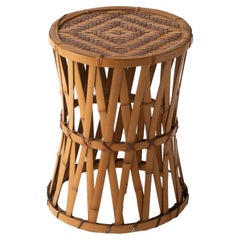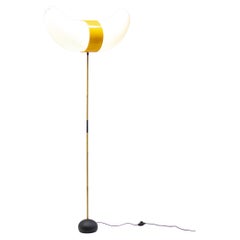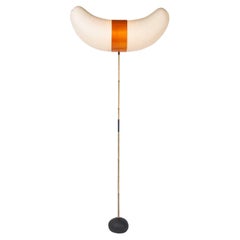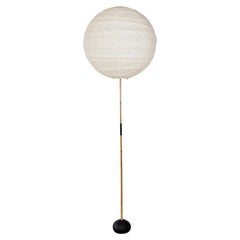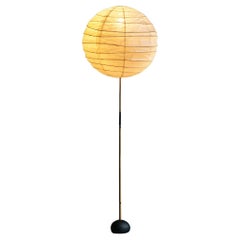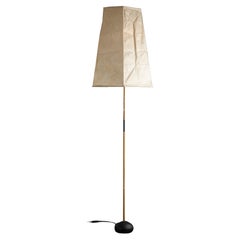
Isamu Noguchi Akari V2 / BB3 Stand, Ozeki, 1951
View Similar Items
Isamu Noguchi Akari V2 / BB3 Stand, Ozeki, 1951
About the Item
- Creator:Isamu Noguchi (Artist)
- Design:
- Dimensions:Height: 67.72 in (172 cm)Diameter: 13 in (33 cm)
- Style:Mid-Century Modern (Of the Period)
- Materials and Techniques:
- Place of Origin:
- Period:
- Date of Manufacture:1951
- Condition:All our Akari are very early models. Historically important, all our Akari are showed to our spe. restorer to decide if yes or no we have to restore it to respect its integrity. To have more information on one particular piece, please contact us.
- Seller Location:Lille, FR
- Reference Number:1stDibs: LU5871225526652
Akari Light Sculpture
It was a trip to Japan in the spring of 1951 that inspired artist and designer Isamu Noguchi (1904–88) to create the Akari light sculpture. Noguchi was passing through the city of Gifu, in central Japan, and observed a traditional nighttime festival in which fishermen use cormorants to help them catch fish. Each boat was equipped with a chochin lantern to light its way. Noguchi — one of the 20th century’s most inventive artists — was enraptured with the beauty of these traditional decorative lamps, which were made locally from mulberry bark and bamboo.
The artist met with Gifu’s mayor, who explained that he was seeking a way to reinvigorate his city’s lantern industry. Aiming to bring the chochin’s traditional design into the 20th century, Noguchi made multiple prototypes with an incandescent bulb in place of a candle. He named the updated lantern Akari, which means both illumination and lightness in Japanese. Noguchi debuted his Akari light sculpture at an exhibition of his work at the Museum of Modern Art in Kamakura in 1952. It caught on immediately, not only as a piece of art but also as a functional design.
Since 1951, Noguchi’s Akari lanterns have been handcrafted in Gifu. Fabricators stretch bamboo ribbing across molded wood forms, then glue washi paper — made from the bark of the mulberry tree — to the inside and outside of the resulting frame. Once the glue dries, the shape is set, and the internal wood form can be disassembled and removed. The lanterns are collapsible, a traditional feature that Noguchi insisted on keeping. They can thus be shipped flat around the world in shallow boxes or slender envelopes, and then easily unpacked and installed. This feature contributes to the sculpture’s practicality. As Noguchi was fond of saying, “All you require to start a home are a room, a tatami and Akari."
Isamu Noguchi
A sculptor, painter, ceramicist and furniture and lighting designer, Isamu Noguchi was one of the most prolific and protean creative forces of the 20th century and a key figure in the development of organic modernism. Noguchi’s sculptures and designs — his chairs and tables as well as his timeless Akari lamp and other lighting fixtures — share a common spirit: one of lyrical abstraction, tempo and flow and harmonious balance.
Noguchi was born in Los Angeles to an American mother and Japanese father, and spent most of his childhood in Japan. He returned to the United States at age 13, went to high school in Indiana and enrolled at Columbia University to study medicine. At the same time, he took night courses in sculpture.
Within three months, Noguchi left college to pursue art full time. Noguchi was awarded a Guggenheim Fellowship in 1927 and traveled to Paris to work under Constantin Brancusi. It marked a turning point. Inspired by Brancusi, Noguchi embraced abstraction and began to sculpt in the expressive, rhythmic style that would be the hallmark of his work.
Once back in New York, Noguchi was introduced to design by what would become a lifelong collaboration creating sets for choreographer Martha Graham. His first industrial designs were in Bakelite: the sleek Measured Time kitchen timer created circa 1932, and his famed Zenith Radio Nurse intercom, from 1937.
Ten years later, Herman Miller introduced Noguchi’s now-iconic glass-topped coffee table with an articulated wooden base. His washi paper and bamboo Akari light sculptures, handmade in Japan, debuted in 1951. In the late 1950s, Noguchi designed for Knoll, creating such pieces as his dynamic Cyclone table and rocking stool.
For collectors, Noguchi’s furniture and lighting designs remain his most accessible work — they have the same power and presence that Noguchi brought to his art.
Find vintage Isamu Noguchi floor lamps, table lamps, coffee tables and other furniture on 1stDibs.
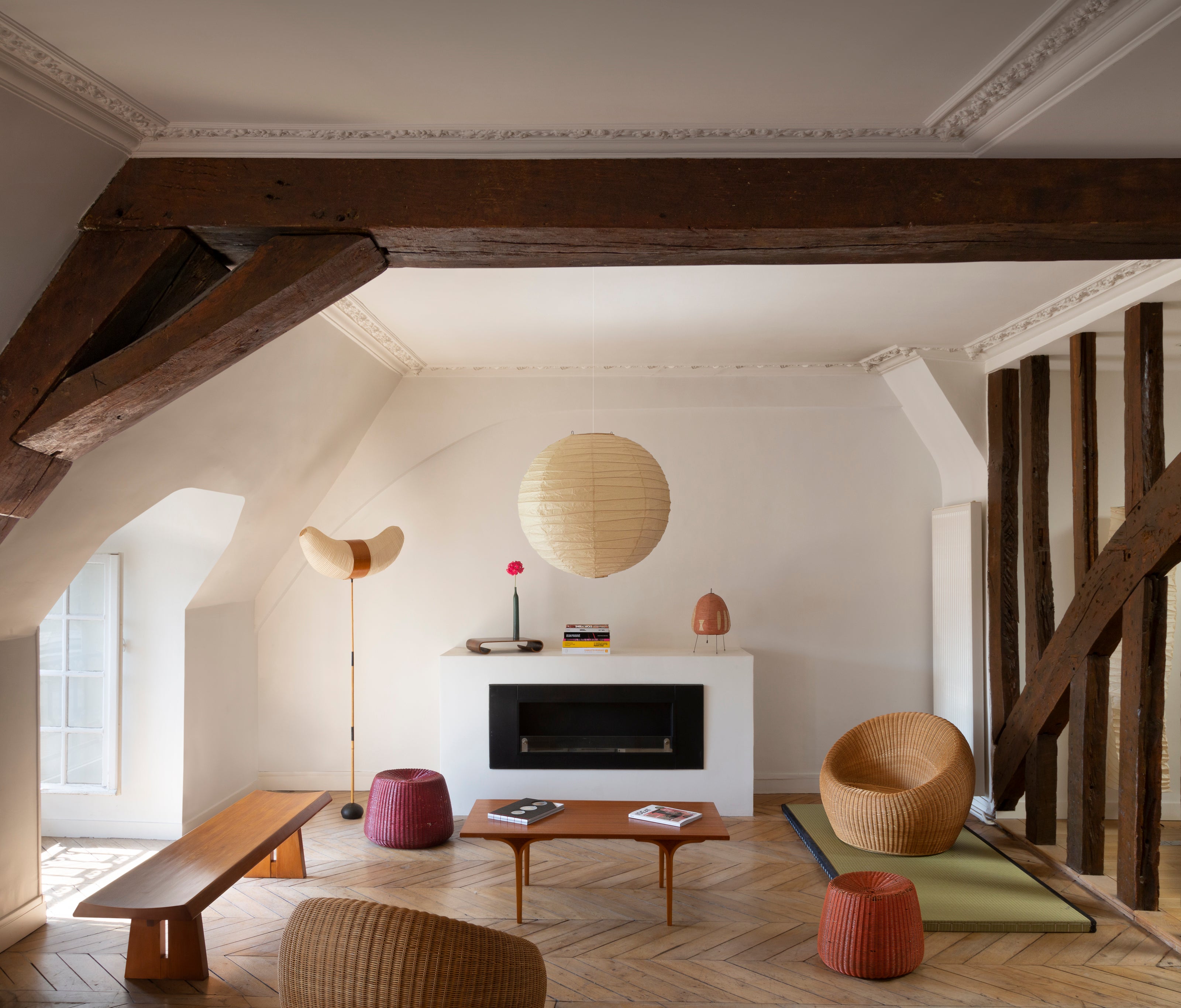
More From This Seller
View AllVintage 1960s Japanese Mid-Century Modern Chairs
Fabric, Maple
Vintage 1960s Japanese Mid-Century Modern Armchairs
Wood
Vintage 1960s French Mid-Century Modern Decorative Dishes and Vide-Poche
Ebony
Vintage 1950s Japanese Mid-Century Modern Stools
Bamboo
Vintage 1960s Japanese Mid-Century Modern Coffee and Cocktail Tables
Metal
2010s French Table Lamps
Bronze
You May Also Like
Mid-20th Century Japanese Mid-Century Modern Floor Lamps
Iron
2010s Japanese Mid-Century Modern Floor Lamps
Steel
Mid-20th Century Japanese Mid-Century Modern Floor Lamps
Steel
Vintage 1950s Japanese Mid-Century Modern Floor Lamps
Cast Stone
Vintage 1960s Japanese Mid-Century Modern Floor Lamps
Steel
Vintage 1950s Japanese Mid-Century Modern Floor Lamps
Steel
Recently Viewed
View AllRead More
Iconic Furniture Gives These 1stDibs 50 Rooms Timeless Appeal
A well-made armchair, table or pendant lamp can afford both comfort and convenience. An exceptional one can transform a space. See how the honorees on this year’s 1stDibs 50 list of top interior designers used standout pieces to create the kind of rooms you never want to leave.
A New Exhibition Spotlights the Nuance of 1940s Art and Design
Works by a range of designers and artists prove that the constraints of the time didn't stifle creativity.
